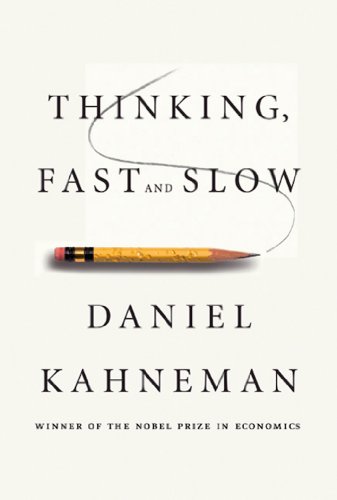

This article is an excerpt from the Shortform summary of "Thinking, Fast and Slow" by Daniel Kahneman. Shortform has the world's best summaries of books you should be reading.
Like this article? Sign up for a free trial here .
What is narrative fallacy? When and why do you make this fallacy, and how can you avoid it?
The narrative fallacy is the tendency to create a story with cause-and-effect explanations out of random details and events. We fall victim to the narrative fallacy because our brains want to make sense of a random world.
Learn why your brain is so prone to falling for the narrative fallacy and how to counter it.
The Narrative Fallacy Explained
People want to believe a story and will seek cause-and-effect explanations in times of uncertainty. This is the narrative fallacy. The narrative fallacy helps explain the following:
- Stock market movements are explained like horoscopes, where the same explanation can be used to justify both rises and drops (for instance, the capture of Saddam Hussein was used to explain both the rise and subsequent fall of bond prices).
- Most religions explain the creation of earth, of humans, and of the afterlife.
- Famous people are given origin stories – Steve Jobs reached his success because of his abandonment by his birth parents. Sports stars who lose a championship have the loss attributed to a host of reasons.
Once a story is established, it becomes difficult to overwrite. (Shortform note: this helps explain why frauds like Theranos and Enron were allowed to perpetuate – observers believed the story they wanted to hear.)
Building a Narrative / Seeing Causes and Intentions
The System-1 brain (the intuitive brain) wants to make sense of the world. It wants large events to cause effects, and it wants effects to have causes. It tries to bring coherence to a set of data points and sees interpretations that may not be explicitly mentioned. This results in the narrative fallacy.
For example: “After spending a day exploring sites in the crowded streets of New York, Jane discovered that her wallet was missing.”
Immediately, you likely pictured a pickpocket. If you were asked about this sentence later, you would likely recall the theft, even if it wasn’t stated in the text.
Once you receive a surprising data point, you also interpret new data to fit the narrative.
Imagine you’re observing a restaurant, and a man tastes a soup and suddenly yelps. This is surprising. Now two things can happen that will change your interpretation of the event:
- The server touches the man’s shoulder and he yelps.
- A woman at a different table drinks her soup, and she also yelps.
In the first case, you’ll think the man is hyper-reactive. In the second case, there’s something wrong with the soup. In both cases, System 1 assigns cause and effect without any conscious thought.
Narrative Fallacy Examples
We desire packaging up a messy world into a clean-cut story. It is unsatisfying to believe that outcomes are based largely on chance, partially because this makes the future unpredictable. But in a world of randomness, regular patterns are often illusions.
Here are a few examples of narrative fallacy:
- History is presented as an inevitable march of a sequence of events, rather than a chaotic mishmash of influences and people. If the past were so easily predictable in hindsight, then why is it so hard to predict the future?
- Management literature profiles the rise and fall of companies, attributing company growth to key decisions and leadership styles, even the childhood traits of founders. These stories ignore all the other things that didn’t happen that could have caused the company to fail (and that did happen to the many failed companies that aren’t profiled – survivorship bias). Ignoring this, the stories are presented as inevitabilities.
- The book Built to Last profiled companies at the top of their field; these companies did not outperform the market after the book was published.
- Management literature also tries to find patterns to management systems that predict success. Often, the results are disappointing and not enduring.
- The correlation between a firm’s success and the quality of its CEO might be as high as .30, which is lower than what most people might guess. Practically, this correlation of .30 suggests that the stronger CEO would lead the stronger firm in 60% of pairs, just 10% better than chance.
- We readily trust our judgments in situations that are poor representatives of real performance (like in job interviews).
Funnily, in some situations, an identical explanation can be applied to both possible outcomes. Some examples:
- During a day of stock market trading, an event might happen, like the Federal Reserve System lowering interest rates. If the stock market goes up, people say investors are emboldened by the move. If the stock market goes down, people say investors were expecting greater movement, or that the market had already priced it in. That the same explanation can be given, regardless of whether the market moves up or down, means that it’s likely a bad explanation with no predictive power.
- A CEO is known for his methodical, rigid style. If his company does well, they compliment him for sticking to his guns with clearly the right strategy. If the company falters, they blame his inflexibility to adapt to new situations.
Even knowing the narrative fallacy, you might still be tempted to write a narrative that makes sense—for example, successful companies become complacent, while underdogs try harder, so that’s why reversion to the mean happens. Kahneman says this is the wrong way to think about it—the gap between high performers and low performers must shrink, because part of the outcome was due to luck. It’s pure statistics.
There are obviously factors that correlate somewhat with outcomes. The founders of Google and Facebook are likely more skilled than the lower quartile of startups. Warren Buffett’s experience and knowledge is likely a good contributor to his investing success, and you’d be more successful if you replicated it. The key question is – how strong is the correlation?
Clearly a professional golfer can beat a novice perhaps 100% of the time. However, skill is the dominant factor here – the correlation is very high, so predictability is very high. In contrast, if you took the management principles espoused in business literature and tried to predict company outcomes, you might find they predict little. The correlation between management principles and company outcomes is likely low, which then means that a company’s success or failure is likely not due to their management practices.
Antidotes to Narrative Fallacy
Be wary of highly consistent patterns from comparing more successful and less successful examples. You don’t know lots of things—whether the samples were cherrypicked, whether the failed results were excluded from the dataset, and other experimental tricks.
Be wary of people who declare very high confidence around their explanation. This suggests they’ve constructed a coherent story, not necessarily that the story is true. Don’t fall victim to the narrative fallacy.
———End of Preview———

Like what you just read? Read the rest of the world's best summary of "Thinking, Fast and Slow" at Shortform . Learn the book's critical concepts in 20 minutes or less .
Here's what you'll find in our full Thinking, Fast and Slow summary :
- Why we get easily fooled when we're stressed and preoccupied
- Why we tend to overestimate the likelihood of good things happening (like the lottery)
- How to protect yourself from making bad decisions and from scam artists






